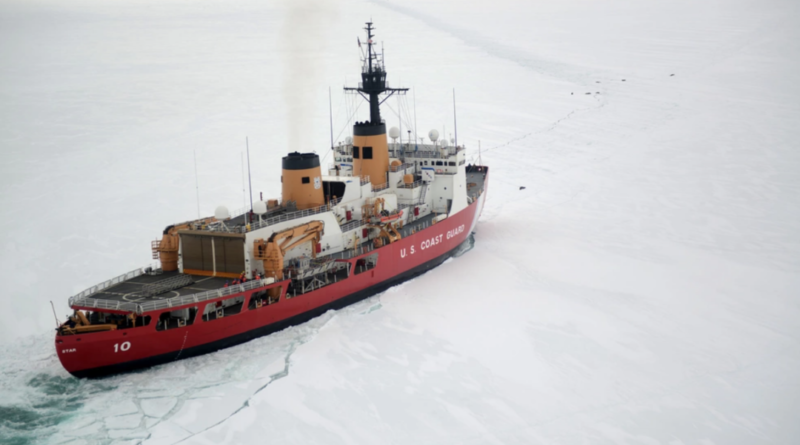Trilateral Agreement Formed by US, Canada, and Finland to Enhance Arctic Icebreaker Shipbuilding
The nations have come together to form the Icebreaker Collaboration Effort Pact, aiming to strengthen their fleets in response to increasing competition in the Arctic region.
A trilateral security partnership involving the United States, Canada, and Finland has been initiated to enhance the production of icebreaking ships in light of the growing competition in the Arctic.
President Joe Biden, Canadian Prime Minister Justin Trudeau, and Finnish President Alexander Stubb made the formal announcement of this agreement on July 11 during the NATO summit in Washington.
Known as the Icebreaker Collaboration Effort (ICE) Pact, the agreement outlines areas of collaboration among the three governments to foster the development of ships capable of operating in the icy waters of the far north.
The trio will share information regarding icebreaker production, work together on workforce development within the shipbuilding industry, and address a need in the shipping market for other allies and partners.
During a background press call on July 10, a White House official mentioned that the new agreement could potentially lead to the construction of 70 to 90 new icebreakers over the next decade for the partner nations, themselves, and their allies and partners, as well as exporting polar icebreakers at a quick and affordable rate.
Arctic Strategic Competition on the Rise
The push to increase icebreaker ship production among the three primary signatories and their partners comes at a time when Russia and China are showing increased interest in the northern sea region.
As access to the Arctic expands, there are new opportunities to develop international trade routes.
Moreover, the Arctic region is home to vast untapped natural resources.
Discussing the ICE Pact in a press call on July 10, U.S. Deputy National Security Adviser for International Economics Daleep Singh highlighted the increasing collaboration between Russian and Chinese leaders to expand their presence in the Arctic, including joint naval patrols.
This growing partnership between Russia and China in the Arctic has played a significant role in the establishment of the new agreement among the United States, Canada, and Finland.
Mr. Singh mentioned, “Without this agreement, there is a risk that our adversaries could gain an advantage in a specialized technology of immense geostrategic importance, which could also potentially make them the preferred supplier for countries interested in acquiring polar icebreakers.”
The Coast Guard is progressing with a new Polar Security Cutter program to strengthen its icebreaker fleet, with two cutters already ordered and a third in the pipeline.
The delivery of these new cutters in 2024 has been delayed, with the first ship expected to be ready by 2029, according to CRS estimates.
Canada currently operates 12 government-owned icebreakers, while Finland has nine.
In comparison, Russia has 36 government-operated icebreakers, with two additional government-owned but non-operational icebreakers and the potential to call upon another 15 privately owned vessels.
China, on the other hand, has four ice vessels.

Bollinger Shipyards, based in Louisiana, is responsible for fulfilling the current U.S. Coast Guard order for Polar Security Cutters.
The White House confirmed that the new ICE Pact will uphold this arrangement, with the ships currently under order from Bollinger Shipyards forming the basis of the American effort to strengthen its presence in the polar regions.
In a press statement on July 11, Mr. Stubb emphasized the significance of the ICE Pact for Finland, which became an official NATO member in April 2023.
“Finland is involved in the design of 80% of the world’s icebreakers and handles the construction of 60%. Finnish expertise is highly valued. This declaration would not have been possible without Finland’s NATO membership,” remarked the Finnish president.





